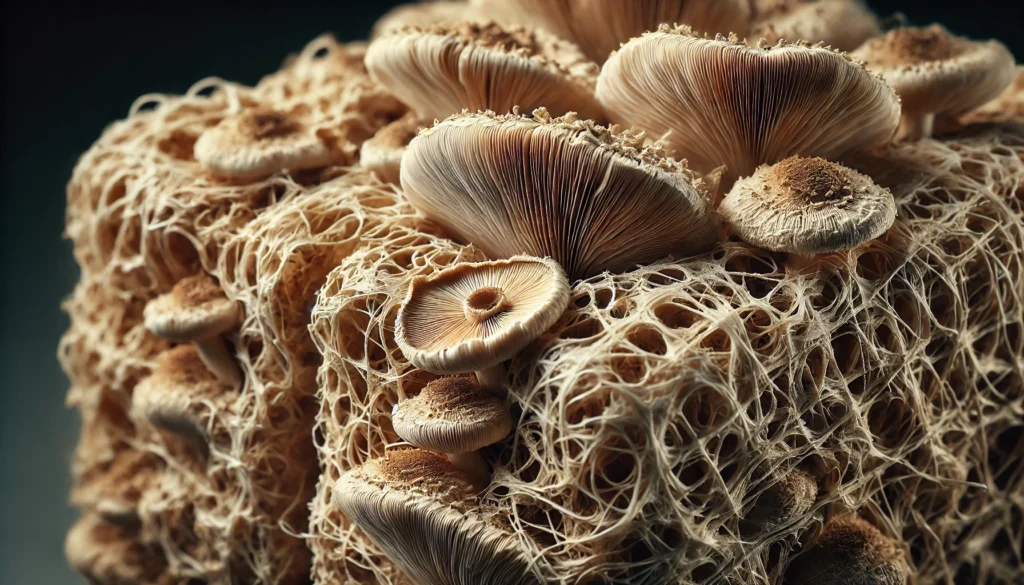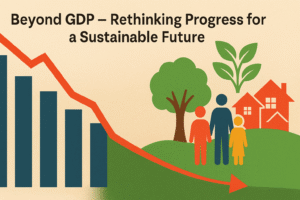Amidst the busy pace of our everyday routines, we often overlook packaging. Yet, it plays a massive role in our consumer-driven society. Packaging is everywhere, whether it’s the box protecting your online shopping haul or the takeout container from your favorite restaurant. Unfortunately, most of it is made from Styrofoam (Expanded Polystyrene, EPS), which harms our environment. Enter mushroom packaging – nature’s alternative to Styrofoam.
The Problem with Styrofoam
Styrofoam is a popular material because it’s cheap, lightweight, and has excellent insulating properties. However, it’s also a significant environmental hazard. Styrofoam takes centuries to break down, and when it eventually does, it disintegrates into tiny particles that contaminate our soil and waterways. Burning it releases toxic fumes, making disposal a tricky issue. With its rapid urbanization and increasing consumption, India faces a mounting problem of Styrofoam waste.

The Magic of Mushrooms
Mushroom packaging is a revolutionary solution that could change our thoughts about packaging. This innovative material is made from agricultural waste and mycelium – the root structure of mushrooms. Companies like Ecovative Design (a US-based company pioneering sustainable alternatives) have developed a process where mycelium functions as a natural adhesive, combining agricultural waste into a robust, biodegradable substance.
How Mushroom Packaging is Made
The process of creating mushroom packaging is fascinating. It begins with agricultural waste, such as corn stalks or husks, cleaned and placed into molds. Mycelium is then added and allowed to grow over several days. The mycelium weaves through the waste, creating a dense, solid structure. Once the material has fully formed, it’s heat-treated to stop further growth, resulting in a product that is ready to use.
Benefits of Mushroom Packaging
Biodegradable: Mushroom packaging decomposes in 30 days when composted, unlike Styrofoam, which can take centuries.
Non-toxic: It is composed of natural materials, ensuring that no harmful chemicals are emitted into the environment.
Renewable: The primary ingredients are agricultural byproducts and mycelium, both renewable resources.
Versatile: Mushroom packaging can be shaped into various forms and sizes, making it versatile for many uses, from electronic packaging to safeguarding fragile items.
Mushroom Packaging in India
With its rich agricultural landscape, India is perfectly poised to adopt mushroom packaging. Using agricultural waste such as rice husks, coconut coir, and wheat straw, Indian entrepreneurs can create local, sustainable packaging solutions. The shift to mushroom packaging can significantly reduce the country’s dependency on Styrofoam, addressing waste management and environmental degradation.
Pioneering Efforts in India
Some Indian startups are already exploring mushroom packaging. For instance, Enviu (a Dutch company with operations in India) is working on developing sustainable packaging solutions, including those using mycelium. Similarly, the Indian Institute of Technology (IIT) has research teams investigating the potential of mycelium-based materials.
Challenges and the Way Forward
While mushroom packaging is promising, there are challenges to its widespread adoption in India. These include:
Awareness: Many businesses and consumers must know about mushroom packaging and its benefits.
Cost: Initially, mushroom packaging might be more expensive than Styrofoam due to limited production scale.
Infrastructure: Developing the necessary infrastructure for large-scale production of mushroom packaging requires investment.
Government support and public awareness campaigns are crucial to overcoming these challenges. Policies promoting sustainable packaging, startup subsidies, and educational initiatives can accelerate the transition.
How You Can Help
As consumers, we have the power to drive change. Here are a few ways you can contribute:
Choose Sustainable Products: Support brands that use eco-friendly packaging.
Spread the Word: Educate your friends and family about the benefits of mushroom packaging.
Compost at Home: If you receive mushroom packaging, compost it to see how it decomposes and enriches your soil.
The Future of Packaging
Mushroom packaging represents a future where packaging doesn’t harm the planet. It’s a testament to how innovation can harness nature’s potential to solve modern problems. As India grows, adopting sustainable practices like mushroom packaging will ensure a healthy, vibrant future for future generations.
Conclusion
In the fight against environmental degradation, every small step counts. Mushroom packaging is one such step that holds immense potential. We can contrnature’s a cleaner, greener India by choosing nature’s alternative to Styrofoam. Let’s embrace this eco-friendly solution and pave the way for a sustainable future.
Author’sNote
Thank you for reading about mushroom packaging! As we strive for a sustainable future, we play a vital role. Let us continue to make conscious choices that benefit our planet.
G.C., Ecosociosphere contributor.




